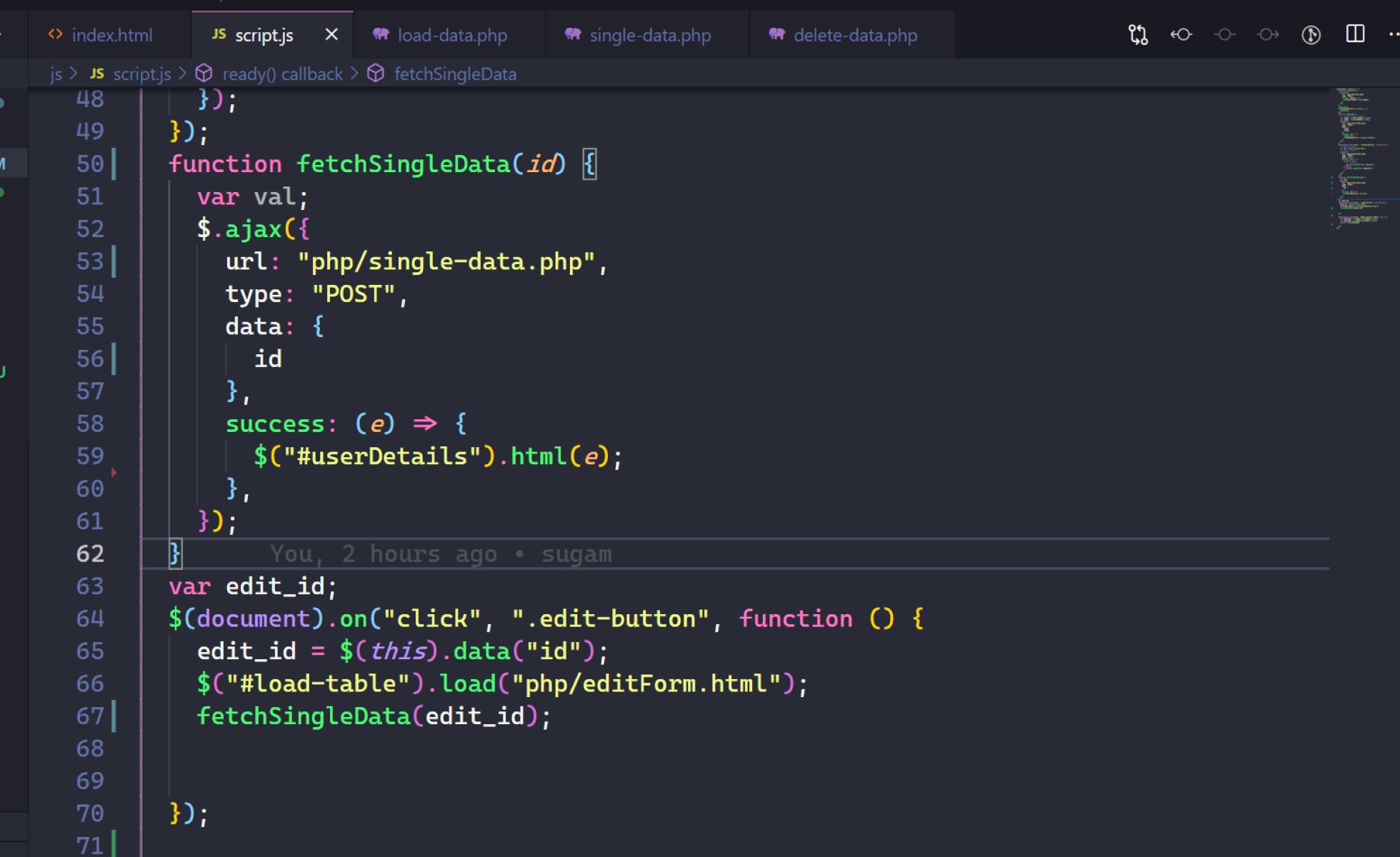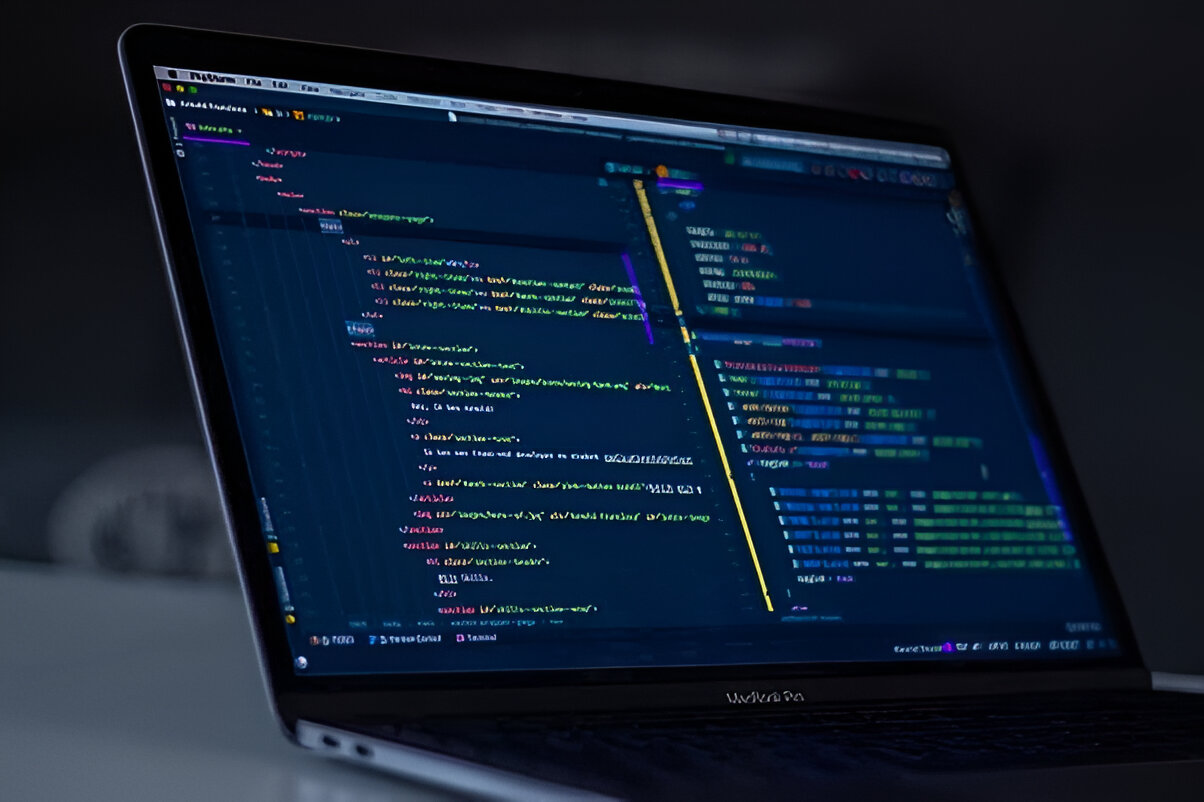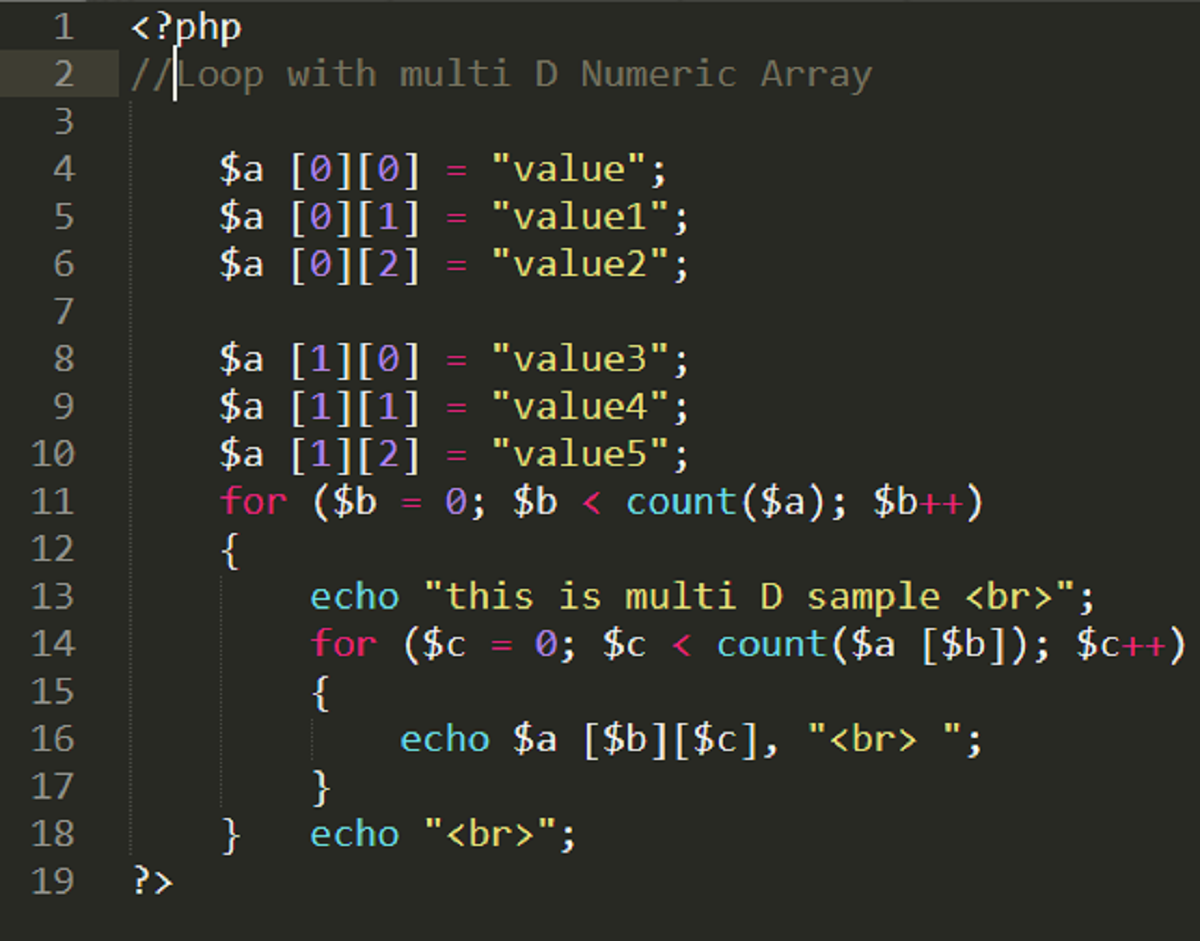Introduction
Iteration is a fundamental concept in coding that allows developers to repeat a series of instructions or actions multiple times. It is an essential tool for automating repetitive tasks, processing large sets of data, and achieving efficient and concise code execution. In this article, we will explore the concept of iteration, its importance in coding, and the different types of loops commonly used to implement iteration.
When faced with a situation where you need to perform the same set of actions multiple times, manually writing the code for each step can be time-consuming and error-prone. This is where iteration comes in handy. By using loops, developers can write a block of code that gets executed repeatedly until a specific condition is met. This not only saves time and effort but also enables the execution of complex tasks with minimal code.
Iteration plays a crucial role in various coding scenarios, such as processing arrays, searching for specific elements, sorting data, and generating patterns. It allows you to perform computations, update variables, and make decisions based on specific conditions without the need for redundant code or redundant manual intervention.
In the following sections, we will delve deeper into the different types of loops used in coding, including for loops, while loops, and do-while loops. We will provide examples of how iteration can be implemented in code and discuss its advantages in terms of code readability, efficiency, and maintainability. So, let’s dive in and explore the world of iteration in coding!
Definition of Iteration
Iteration refers to the process of repeating a set of instructions or actions multiple times in a systematic and controlled manner. In the context of coding, iteration allows developers to automate repetitive tasks by using loops, which execute a block of code repeatedly until a specific condition is met.
At its core, iteration involves the concept of a loop, which is a construct that controls the repetition of a block of code. This repetition can occur a fixed number of times or continue until a particular condition is satisfied. By leveraging iteration in coding, developers can streamline their programs, reduce redundancy, and improve efficiency.
By using the appropriate looping mechanisms, such as for loops, while loops, or do-while loops, developers can iterate through arrays, collections, or perform tasks that require repeated execution of a specific set of instructions. Each iteration allows the code to process different values, update variables, and make decisions based on specific conditions.
Iteration is a fundamental concept in programming, as it enables the handling of large datasets, generation of patterns, and the execution of complex computations. It is an essential tool for solving problems that require repetitive actions, such as sorting elements, searching for specific values, or performing mathematical calculations.
By implementing iteration effectively, developers can write code that is concise, modular, and easier to maintain. It promotes code reusability and reduces the chances of introducing errors or duplicating code. Understanding and mastering the concept of iteration is crucial for any programmer looking to write efficient and scalable code.
Looping in Coding
Looping is a fundamental technique in coding that enables the repetition of a set of instructions. It allows developers to execute a block of code multiple times, either for a specific number of iterations or until a particular condition is met. Looping is achieved through the use of loop structures, which are available in most programming languages.
The concept of looping in coding can be compared to repeating a task in the real world. For example, if you are asked to write your name 100 times, you wouldn’t manually write it out 100 times. Instead, you would find a way to automate the process, such as using a pen and paper or a computer program. In coding, loops serve the same purpose – they automate the repetition of tasks.
Looping is especially useful when working with collections of data, such as arrays or lists, and performing operations on each element. Instead of writing the same code for each element, a loop allows developers to iterate through the collection, executing the desired instructions for each item. This not only saves time and effort but also makes the code more concise and maintainable.
There are different types of loops commonly used in programming languages, including:
- For Loops: A for loop is used when the number of iterations is known in advance. It includes an initialization statement, a condition for executing the loop, and an increment or decrement statement.
- While Loops: A while loop is used when the number of iterations is not known in advance. It continues to execute the loop as long as a specified condition is true.
- Do-While Loops: A do-while loop is similar to a while loop, but it always executes the loop at least once before checking the condition for continuing.
By using these looping structures, developers can efficiently iterate through data, process information, manipulate variables, and control the flow of their programs. Looping is an essential technique that helps to solve numerous coding problems, improves code readability, and enhances the overall efficiency of a program.
Types of Loops
In programming, there are several types of loops that allow developers to repeat a block of code based on specific conditions or a predetermined number of iterations. Understanding the different types of loops and their characteristics is essential for writing efficient and concise code. Here are the three main types of loops:
- For Loops: The for loop is commonly used when the number of iterations is known in advance. It consists of three parts: the initialization, the condition, and the increment or decrement. The loop continues executing the code until the condition evaluates to false. For example, if you need to iterate through an array of elements, a for loop can be used to access each element and perform operations on them.
- While Loops: The while loop is used when the number of iterations is not known in advance. It repeatedly executes the block of code as long as the specified condition is true. The condition is evaluated before each iteration, and if it becomes false, the loop terminates. While loops are commonly used when working with dynamic data or when the exact number of iterations is uncertain.
- Do-While Loops: The do-while loop is similar to the while loop, but it guarantees that the block of code is executed at least once, regardless of the condition. After the code is executed, the condition is evaluated. If it is true, the loop continues to execute, otherwise, it terminates. Do-while loops are useful when you want to ensure that a block of code runs at least once, regardless of the condition.
Each type of loop has its own characteristics and use cases. For loops are ideal for iterating over a known number of elements, such as arrays or lists. While loops are suitable for situations where you don’t know the exact number of iterations in advance, and the loop continues until a condition becomes false. Do-while loops are effective when you want to execute a block of code at least once, regardless of the condition.
By using the appropriate type of loop, you can efficiently control the flow of your code and perform repetitive tasks with ease. It’s important to choose the right loop structure based on the specific requirements of your program to ensure optimal performance and code readability.
For Loops
A for loop is a control structure in programming that allows a block of code to be executed a specific number of times. It is commonly used when the number of iterations is known in advance or when you need to iterate over a collection of elements. The syntax of a for loop typically includes an initialization statement, a condition, and an increment or decrement statement.
The general structure of a for loop is as follows:
for (initialization; condition; increment/decrement) {
// code to be executed
}Let’s break down each component of the for loop:
- Initialization: This step is executed only once before the loop begins. It is used to initialize a counter variable or set other initial values.
- Condition: The condition is checked before each iteration. If it evaluates to true, the loop continues executing; otherwise, it terminates. The condition typically involves the counter variable but can include other Boolean expressions.
- Increment/Decrement: This step is executed at the end of each iteration and is used to update the counter variable. The increment or decrement operation determines the number of times the loop will execute.
For loops offer a convenient way to iterate over a sequence of elements, such as an array, using an index-based approach. Here’s an example that demonstrates how a for loop can be used to iterate through an array of names:
const names = ["John", "Jane", "Mike", "Emily"];
for (let i = 0; i < names.length; i++) {
console.log(names[i]);
}In this example, the for loop iterates over each element of the names array, printing each name to the console. The loop starts with an initialized variable i set to 0. The condition checks if i is less than the length of the array. If true, the loop continues, and the code inside the curly braces is executed. After each iteration, the counter variable i is incremented by 1, until the condition becomes false.
For loops are versatile and can be used in various scenarios. They provide a concise and structured way to perform repetitive tasks, making them a valuable tool in coding.
While Loops
A while loop is a control structure in programming that executes a block of code as long as a specified condition remains true. Unlike a for loop, a while loop does not have a predetermined number of iterations. Instead, it continues to execute as long as the condition evaluates to true.
The syntax of a while loop is as follows:
while (condition) {
// code to be executed
}Here's an example that demonstrates how a while loop can be used to countdown from 5 to 1:
let count = 5;
while (count >= 1) {
console.log(count);
count--;
}In this example, the while loop starts with a counter variable count initialized to 5. The loop continues to execute as long as the condition "count is greater than or equal to 1" evaluates to true. Inside the loop, the current value of count is printed to the console, and then the count is decremented by 1. This process continues until the condition becomes false.
While loops are commonly used when the exact number of iterations is unknown or when the loop needs to continue until a specific condition is met. They provide a flexible way to repeatedly execute a block of code based on dynamically changing conditions.
It's important to ensure that the condition in a while loop eventually becomes false; otherwise, the loop will continue indefinitely, resulting in an infinite loop. To prevent infinite loops, it's common to include within the loop a mechanism that updates the condition or a break statement that can be used to exit the loop when a certain condition is met.
While loops are powerful tools for managing dynamic data and creating responsive code that adapts to changing conditions.
Do-While Loops
A do-while loop is a control structure in programming that executes a block of code at least once, regardless of the condition. It is similar to a while loop but with a crucial difference - the condition is checked after the code block is executed.
The syntax of a do-while loop is as follows:
do {
// code to be executed
} while (condition);Here's an example that demonstrates how a do-while loop can be used to prompt a user for input until they enter a valid number:
let number;
do {
number = parseInt(prompt("Enter a number:"));
} while (isNaN(number));In this example, the do-while loop prompts the user to enter a number using the `prompt()` function. The loop continues to execute as long as the condition `isNaN(number)` (checks if the value is not a number) evaluates to true. If the user enters a non-numeric value, the loop will repeat until a valid number is entered.
The key advantage of a do-while loop is that it guarantees the code block will be executed at least once. This is useful when you need to perform an action before checking the condition. However, it's important to ensure the loop will eventually reach a condition that evaluates to false; otherwise, it could result in an infinite loop.
Do-while loops are particularly useful in situations where you want to execute a block of code before evaluating a condition, such as menu selections, user input validation, or game loops.
By utilizing do-while loops, you can create more interactive and responsive code that allows users to interact with your program until a specific condition or requirement is met.
Examples of Iteration in Coding
Iteration is a powerful concept in coding that finds application in various scenarios. Let's explore a few examples of how iteration can be used to solve common programming problems:
- Summing an Array: Suppose you have an array of numbers and you want to calculate their sum. By using iteration, you can iterate through each element of the array and add it to a running total variable.
- Searching for an Element: If you have an array of values and you want to find a specific element, you can use iteration to check each element until a match is found or the end of the array is reached.
- Generating a Fibonacci Sequence: The Fibonacci sequence is a series of numbers in which each number is the sum of the two preceding ones. By using iteration, you can generate a Fibonacci sequence by repeatedly updating the previous two numbers.
- Sorting an Array: Iteration is essential in sorting algorithms such as bubble sort, insertion sort, or selection sort. These algorithms repeatedly compare and swap elements until the array is sorted in the desired order.
- Printing Patterns: By using iteration, you can generate various patterns, such as triangles, squares, or pyramids. By controlling the number of iterations and the printing pattern, you can create visually appealing patterns.
These are just a few examples of how iteration can be applied in coding. The beauty of iteration lies in its versatility and ability to solve a wide range of problems efficiently. By leveraging the power of iteration, you can automate repetitive tasks, process data, and achieve more elegant and concise code.
Next, let's explore the benefits of using iteration in coding and how it enhances the development process.
Benefits of Using Iteration in Coding
Using iteration in coding comes with several benefits that improve the development process and the overall efficiency of your code. Let's examine some of the key advantages of utilizing iteration:
- Code Reusability: By using loops, you can write a block of code that can be executed multiple times with different values. This promotes code reusability, as you can avoid duplicating the same code for each iteration.
- Efficiency: Iteration enables the efficient processing of large datasets. Instead of manually performing operations on each element, you can automate the process, saving time and effort. With iteration, complex computations and repetitive tasks can be handled efficiently.
- Readability: Iteration allows you to express complex logic or repetitive actions in a more concise and readable manner. By encapsulating the repeated code within a loop, you make the code easier to understand, maintain, and debug.
- Flexibility: Iteration provides flexibility in handling dynamic or changing data. You can adapt your code to handle varying input sizes, conditions, or user interactions. This flexibility makes your code more adaptable and scalable.
- Error Prevention: By using loops, you reduce the chances of introducing errors or omitting steps that need to be performed repeatedly. The automated and consistent nature of iteration ensures that all required actions are performed for each iteration, minimizing the risk of human error.
- Modularity: Iteration allows you to break down complex tasks into smaller, more manageable chunks. By encapsulating the repeated code within loops, you promote modularity and code organization. This makes your code more maintainable and easier to update or modify in the future.
Overall, leveraging iteration in coding enhances productivity, code quality, and maintainability. It empowers developers to handle repetitive tasks efficiently, process data effectively, and create more elegant and concise code. By using loops wisely, you can write code that is reusable, scalable, and adaptable to different scenarios.
Now that we have explored the benefits of using iteration, let's wrap up by summarizing the main points discussed.
Conclusion
Iteration is a fundamental concept in coding that allows developers to automate repetitive tasks, process large datasets, and write efficient and concise code. By using loops such as for loops, while loops, and do-while loops, developers can iterate through collections, perform computations, update variables, and make decisions based on specific conditions.
We explored the different types of loops and their characteristics, including how for loops are used when the number of iterations is known in advance, while loops when the exact number of iterations is uncertain, and do-while loops to ensure the execution of a code block at least once before evaluating a condition.
Throughout the article, we saw examples of how iteration can be applied in various coding scenarios, such as summing an array, searching for an element, generating sequences, sorting arrays, and generating patterns. We also discussed the benefits of using iteration, including code reusability, efficiency, readability, flexibility, error prevention, and modularity.
By leveraging the power of iteration in coding, developers can write more effective and maintainable code. It enables the automation of repetitive tasks, allows for efficient processing of data, and promotes code reusability and readability. Whether you're a beginner or an experienced developer, understanding and mastering iteration is crucial for writing efficient and scalable code.
So, embrace the power of iteration in your coding journey and unlock the potential to write more robust and efficient programs!

























